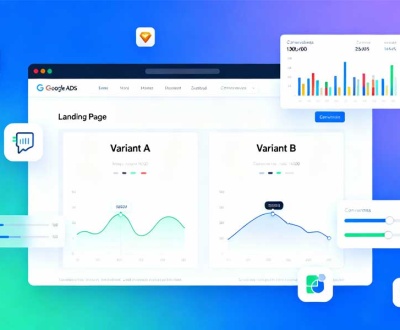Creative Control at a Distance: How to Maintain Brand Consistency When Outsourcing Website Design
- May 23, 2025
- Web Design

Maintaining brand consistency is crucial for any business, whether they are designing a website in-house or outsourcing the work to a third party. When it comes to outsourcing website design, ensuring that your brand’s identity and messaging remain intact can be a challenge, especially when working with a remote team. However, with the right strategies in place, it is possible to maintain creative control and uphold brand consistency even when working with designers from a distance. By clearly defining your brand guidelines, providing thorough briefs, and establishing open lines of communication, you can ensure that your website design project reflects your brand’s values and resonates with your target audience.
Building a Clear Brand Style Guide for External Designers
Creating a clear brand style guide for external designers is essential for businesses looking to maintain a consistent and cohesive brand identity across all their design materials. This guide serves as a roadmap for designers, providing them with the necessary information and guidelines to create designs that align with the brand’s values and aesthetics.
The style guide should include information on the brand’s color palette, typography, logo usage, imagery guidelines, and any specific design elements that are unique to the brand. By providing this detailed information upfront, businesses can ensure that external designers have a clear understanding of the brand’s visual identity and can create designs that are on-brand.
In addition to visual elements, the style guide should also include information on the brand’s tone of voice and messaging guidelines. This ensures that all design materials, whether they are print or digital, communicate the brand’s message in a consistent and cohesive manner.
Tools and Processes to Ensure Visual Consistency Across Pages
When it comes to ensuring visual consistency across website pages, there are several important tools and processes that can help streamline the design process. Design systems are a key component in maintaining a cohesive look and feel throughout a website. By establishing a set of design principles, components, and guidelines, designers can ensure that all pages adhere to the same visual standards.
Shared libraries are another essential tool for maintaining visual consistency. By creating a centralized repository of design assets, such as colors, fonts, and icons, team members can easily access and use the same resources across different pages. This helps to avoid inconsistencies and ensures that the website has a unified visual identity.
Real-time collaboration platforms also play a crucial role in ensuring visual consistency. By allowing team members to work together on designs in real time, these platforms facilitate communication and feedback, helping to catch discrepancies before they become larger issues. This collaborative approach helps to ensure that all team members are on the same page and working towards a consistent visual design.
By incorporating design systems, shared libraries, and real-time collaboration platforms into the design process, teams can effectively maintain visual consistency across website pages. These tools and processes help to streamline the design process, improve communication, and ultimately create a more cohesive and polished website.
Review Cycles That Work: Aligning Feedback Without Delays
One key aspect of an efficient review cycle is setting clear objectives and expectations from the beginning. This includes establishing timelines for each stage of the review process and clearly defining the roles and responsibilities of each team member involved.
Another important factor in a successful review cycle is establishing a feedback mechanism that allows for constructive criticism and suggestions for improvement. This can help to ensure that the feedback provided is actionable and helps to move the project forward. It’s also important to create a system for prioritizing feedback and addressing any urgent issues that may arise during the review process.
Furthermore, having a streamlined approval process can help to prevent unnecessary delays. This could involve setting up automated notifications for when feedback is received, or using project management tools to track changes and revisions. By having a well-defined approval process in place, you can ensure that feedback is implemented in a timely manner and that the project stays on track.
By structuring website design reviews and approvals efficiently, you can ensure that feedback is aligned and implemented without delays, leading to a smoother and more successful design process.
Contact us
Contact us to discuss your Website Design requirement. Get in touch with us by sending a message through our contact form and we will reply back ASAP. We can discuss how we can strategically offer Website Design services for your organization.
GET A QUOTE











